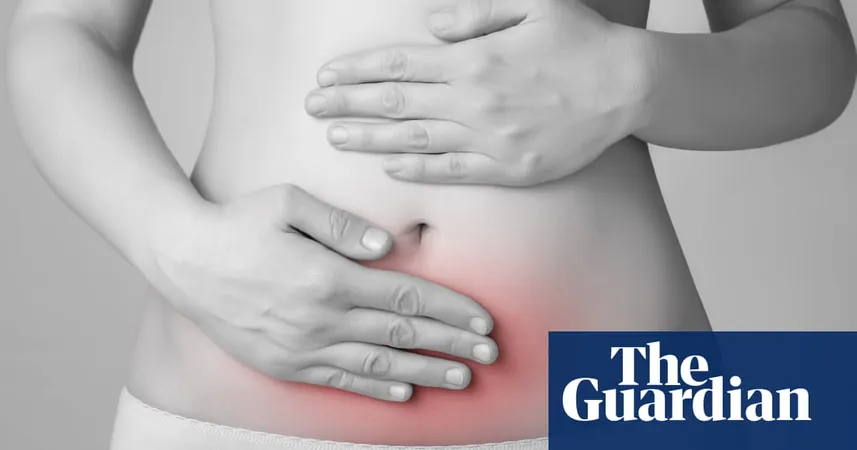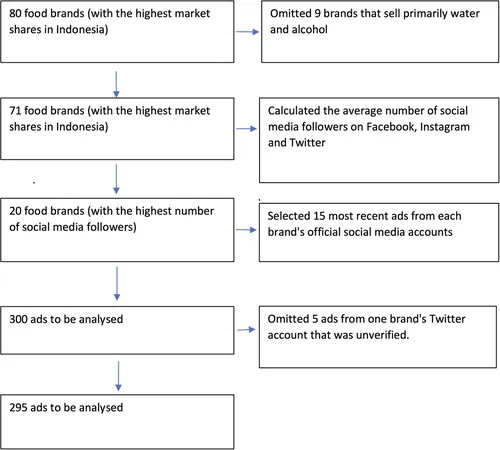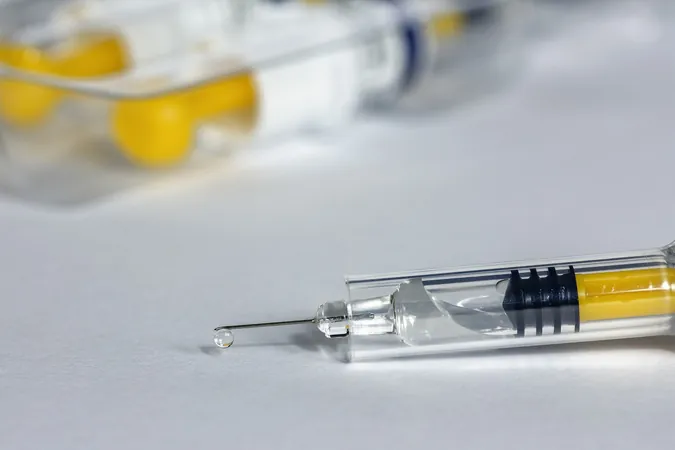
Botox: The Game Changer in the Battle Against Endometriosis Pain
2025-03-29
Author: Sarah
For 15 long years, Katrina Moore endured relentless and debilitating pain that sometimes left her unable to walk. Tragically, her pain was frequently dismissed by healthcare professionals as stress-related, obscuring the true culprit behind her suffering: endometriosis, a painful condition impacting over one million women in Australia alone.
Understanding Endometriosis
Endometriosis occurs when tissue similar to the uterus lining grows outside the uterus, often leading to severe pelvic, bowel, and bladder pain, in addition to complications such as infertility. Moore, now 47, didn't get a definitive diagnosis until she was 40, despite pleading for help to alleviate her pain, fatigue, and struggles with fertility.
“I feel like I was medically gaslit for many years. It really highlights the need for women to advocate for themselves,” Moore shared. “Historically, women’s pain just hasn’t been taken seriously.”
Discovery of Botox as a Treatment
In 2021, Moore underwent a laparoscopic procedure, which was followed by a hysterectomy in 2022. However, it wasn’t until early 2025 that she discovered an unexpected treatment option typically associated with beauty: Botox.
Having previously used Botox for a temporomandibular disorder that impacts jaw movement and causes pain, Moore began to wonder if pelvic floor injections of the same substance could help alleviate her endometriosis-related pain. After conducting research, she learned that her gynecologist offered such injections, although initially, her pelvic floor physiotherapist was unsure because it’s a relatively new treatment.
Moore's Transformation
Taking the plunge, Moore reports a significant transformation: “I’ve gone from having constant pain to experiencing discomfort only a couple of days a month, which is so much more manageable. I also find myself relying far less on pain medication, allowing me to engage in pelvic physiotherapy more effectively.”
“This isn’t a magic bullet. I still have symptoms, but I can now go to bed and sleep, rather than needing a pile of painkillers and a hot water bottle,” she stated, sharing her newfound sense of relief.
Dr. Albert Jung's Insights
Dr. Albert Jung, a leading gynecologist at Brisbane's Mater Private Hospital, has successfully treated around 40 women with botulinum toxin injections aimed at alleviating endometriosis pain. While Botox is a common choice, patients are often treated with Dysport, which is similar but more affordable.
“This technique has been around in prescription form for about a decade, but we have data that stretches back around 20 years indicating its efficacy,” explained Jung. “Research suggests that botulinum toxin can assist women suffering from chronic pelvic pain, and the effects usually last around six months.”
The Injection Process
The injection targets the groin area, working to relax and temporarily paralyze overactive pelvic floor muscles that often contract due to pain. Jung emphasizes that the procedure is low-risk and generally results in better outcomes compared to repeat laparoscopic surgeries.
Government Support for Endometriosis Treatment
Although injections can be beneficial, Jung notes that they should be complemented by ongoing pelvic physiotherapy for optimum results.
In a significant move toward addressing the challenges associated with endometriosis, the Albanese government recently unveiled plans to subsidize treatments that had previously cost patients approximately $750 out of pocket annually. This was part of a more extensive $107 million initiative aimed at assisting Australians with endometriosis through research and therapeutic interventions.
The recognition by governments of the financial burdens faced by individuals with endometriosis is indeed groundbreaking. Moore herself has incurred upwards of six figures in medical expenses over the past seven years for treatments, ongoing physiotherapy, and surgeries. “I only had to pay $500 out of pocket for the Botox treatment, which is relatively affordable compared to other options and also much less invasive,” she noted.
Conclusion
As more women like Moore speak out about their experiences and innovative treatments become available, there's hope that others suffering from endometriosis will find the relief and recognition they deserve.




 Brasil (PT)
Brasil (PT)
 Canada (EN)
Canada (EN)
 Chile (ES)
Chile (ES)
 Česko (CS)
Česko (CS)
 대한민국 (KO)
대한민국 (KO)
 España (ES)
España (ES)
 France (FR)
France (FR)
 Hong Kong (EN)
Hong Kong (EN)
 Italia (IT)
Italia (IT)
 日本 (JA)
日本 (JA)
 Magyarország (HU)
Magyarország (HU)
 Norge (NO)
Norge (NO)
 Polska (PL)
Polska (PL)
 Schweiz (DE)
Schweiz (DE)
 Singapore (EN)
Singapore (EN)
 Sverige (SV)
Sverige (SV)
 Suomi (FI)
Suomi (FI)
 Türkiye (TR)
Türkiye (TR)
 الإمارات العربية المتحدة (AR)
الإمارات العربية المتحدة (AR)